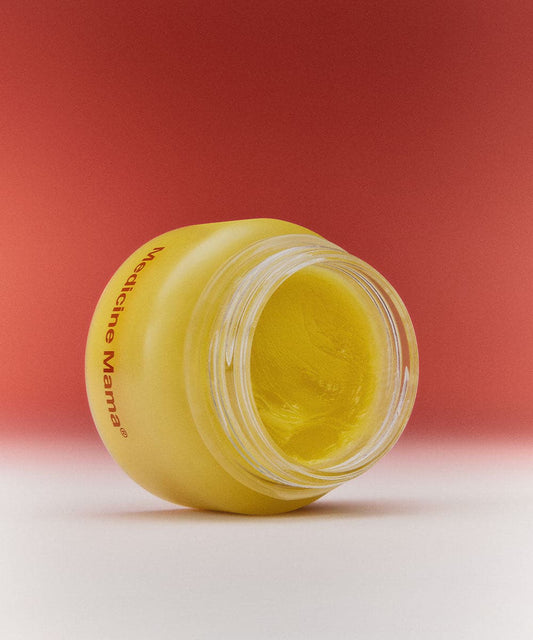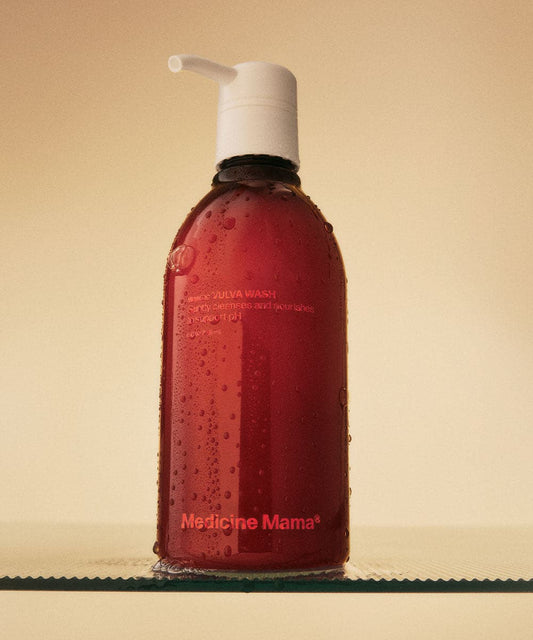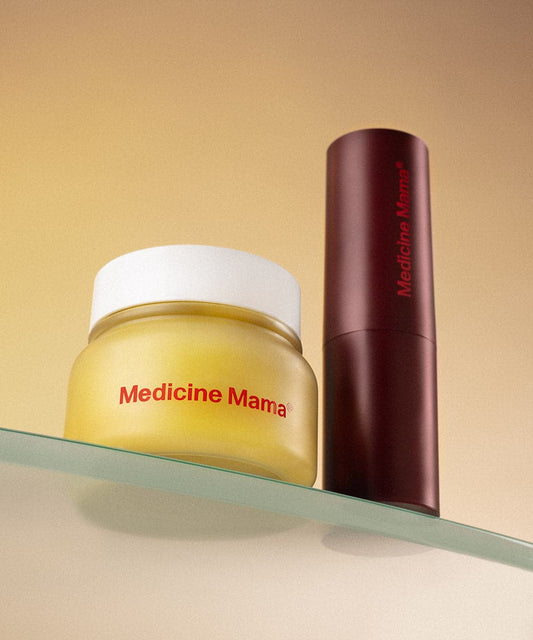Reviewed by | Dr. Clare Bertucio MD
If you've never had an open conversation about vulvar health with, well … anybody, you're not alone. Many women find it challenging to discuss intimate issues such as dryness or changes during menopause — even with their doctors. Yet, understanding how to care for your vulva is a crucial aspect of your overall well-being.
It's essential to break the silence around topics like vaginal discharge, the self-cleaning nature of the vagina, and the use of feminine hygiene products. By opening up discussions and spreading accurate information, we empower ourselves and others to manage and maintain vaginal health responsibly and confidently.
So, let’s talk about your vulva: why you should wash it, when you should wash it, and what you should use to do so safely.
Let’s Talk Anatomy
The vulva includes the external parts of your female genitalia: the labia, clitoris, and the opening of the vagina and urethra. Unlike the vagina, which is self-cleaning, the vulva requires careful cleaning to maintain your overall vaginal health.
Confusing these two different parts of your anatomy with different care needs is a major contributor to common concerns around vaginal health. That said, don’t feel ashamed if this is the first time you’re really thinking about your vaginal anatomy and how to care for it.
Because women’s reproductive health can be treated as taboo even in educational or medical environments, it’s really not your fault. Still, now that you know, it’s important to be clear: misunderstanding these parts can lead to common health issues like urinary tract infections, yeast infections, or bacterial vaginosis.
Understanding the role of each part of your anatomy — from the protective labia that shield the more sensitive structures like the clitoris and urethral opening to the importance of maintaining a balanced environment for the health of the vaginal area — is key to women’s health.
Each part of the vulvar anatomy plays a crucial role in sexual and urinary health, and learning about these functions can improve practices related to personal hygiene, sexual health, and even routine healthcare discussions with your gynecologist or other medical advisors.
Why Is Vaginal Hygiene So Important?
Maintaining a clean vagina isn’t as simple as washing it with whatever soap is handy. As with your skin, the skin around your vagina has its own microbiome, and it’s important that whatever soap or wash you use around this particular delicate area doesn’t upset that.
It can, however, require some trial and error and research to maintain a healthy pH balance and support the good bacteria that defend against infections. Poor practices can lead to vaginal odor, dryness, and irritation and can increase your risk for sexually transmitted infections (STIs) and pelvic inflammatory disease.
Now, if this information is feeling a bit confusing to you because you remember that we noted above that your vagina is self-cleaning, don’t worry.
We’re talking about washing the external area of your vagina — there’s no reason to wash yourself internally. If you’re dealing with a particular vagina smell or odor that’s making you consider something like douching, speak to a doctor first.
It’s likely that the source of the smell is related to one of the concerns we just mentioned, is simply the natural odor of your vaginal discharge, or means you might need to adjust your vulva care. In any of these instances, there’s still no reason to wash inside of your vagina.
It’s important to pay attention to what smells you are noticing. While some can be a signifier of a larger issue (like a fishy smell pointing to BV, or a bread-like smell pointing to yeast), some are the natural smells you will experience with excess sweat.
How Do You Choose the Right Products?
It’s vital to choose products that respect the sensitive nature of your vulvar skin. Our Dr. partners advocate for the use of products we like to describe as boldly pure. This means that they forego harsh chemicals, perfumes, and dyes that could disrupt your vaginal pH or strip away essential oils.
Our products are designed with your health and comfort in mind, ensuring they are gentle yet effective. When selecting products for vulvar care, it's crucial to avoid those containing fragrances, alcohol, and gels, which can cause irritation or allergic reactions. Opt for hypoallergenic and non-comedogenic options to keep your sensitive skin safe.
Remember, what you apply affects not only your skin's health but also its natural defense mechanisms. By choosing the right feminine hygiene products, like organic lubricants and probiotic-rich formulas, you support your body’s natural flora and maintain a healthy vaginal environment.
Step-by-Step Guide To Washing Your Vulva
1. Warm Water Rinse
Begin with a rinse using warm water to help soften the skin and pubic hair. This step removes loose particles and secretions without altering the natural environment of your vulvar area. The use of warm water is crucial as it is gentle on the skin, helping to avoid irritation that can come from using overly hot or cold water.
2. Applying the Right Cleanser
Use a mild, unscented soap or a specialized feminine wash like our VMAGIC® Vulva Wash.
This fragrance-free wash is designed to nourish and support the natural pH balance of your intimate area, ensuring a healthy environment free from irritation. Perfect for daily use, it rinses clean without leaving any residue, maintaining the essential moisture balance needed for optimal health.
The formula is enriched with natural ingredients like Sage Leaf Extract and Matricaria Flower Extract, which are known for their soothing properties. It also includes collagen and Vitamin E to enhance skin elasticity and protect against environmental stressors.
The gentle, non-foaming formula of VMAGIC® Vulva Wash ensures your skin is washed effectively without harsh chemicals or irritants, making it an ideal choice for those with sensitive skin. Just dispense a quarter-sized amount onto your hands or a soft sponge, apply it to your skin, and rinse with warm water for a refreshing and soothing cleanse.
It’s important to note that products with added fragrances, perfumes, or essential oils can be harmful to your vaginal health. Stick to clean ingredients to maintain a balanced pH and a happy, healthy vulva.
3. Drying Techniques
After washing, gently pat the area dry with a clean towel or washcloth. This step is essential to prevent moisture buildup, which can create an environment ripe for yeast infections and bacterial growth. It’s important to ensure the vulvar area is thoroughly dry before dressing to minimize the risk of irritation and infection.
4. Moisturizing
Just like with facial skincare, after washing and drying your skin, it’s good to finish off your routine with a hydrating vulva moisturizer to nourish and protect the area. This goes double if your shower includes any hair removal processes, which can irritate or dry your vulvar skin.
To use our VMAGIC® Vulva Balm, simply scoop out a small amount with clean, dry fingers and gently massage it into the vulvar skin — covering the inner and outer labia, clitoris, vaginal opening, or mons pubis.
Whether it's to combat the effects of hormonal changes, recover from shaving or waxing, or alleviate chafing from exercise or clothing, this balm provides a protective barrier that nourishes and revitalizes.
Perfect for daily use, VMAGIC® Vulva Balm is highly effective for those with sensitive skin, offering immediate relief from irritation and dryness. The inclusion of our proprietary blend of honey and propolis introduces powerful antioxidants and anti-inflammatory benefits, further supporting skin health and comfort.
Common Vulvar Hygiene Mistakes To Avoid
Over-Washing or Under-Washing
Both can disrupt your vulvar environment. Stick to washing once or twice a day unless otherwise advised by your healthcare provider.
Over-washing can strip away natural oils and good bacteria, leading to dryness and irritation, while under-washing can allow for the buildup of bacteria and secretions, increasing the risk of infections like bacterial vaginosis or urinary tract infections.
Using Inappropriate Products
Avoid vaginal douching and products containing fragrances, essential oils, or gels, as these can irritate your skin and disturb the delicate balance of your vulvar area.
As we’ve touched on, douching, in particular, is a harmful practice that can interfere with the vagina's self-cleaning process, removing healthy bacteria and potentially leading to vaginal infections and pelvic inflammatory disease. Instead, opt for hypoallergenic, fragrance-free soaps and washes designed specifically for sensitive skin.
Wearing Non-Breathable Clothing
Always choose breathable, moisture-wicking fabrics, and wear cotton underwear to keep the area dry and allow circulation. Tight clothing and synthetic materials can trap heat and moisture, creating an ideal environment for yeast growth and irritation.
Also, after activities like swimming or exercising, it’s crucial to change out of wet or sweaty garments promptly to prevent infections and maintain a clean and healthy vaginal environment.
A Fresh Finish
Caring for your vulva with the right knowledge and tools empowers you to feel comfortable and healthy. At Medicine Mama, we encourage you to embrace this part of your daily hygiene routine with confidence.
By understanding the needs of your body and using products formulated to support rather than disrupt, you can maintain a clean, healthy vagina and vulva. Join us in promoting a world where every woman is informed and confident in her reproductive and sexual health.
Sources:
Douching | US Department of Health & Human Services
Vaginal Douching: Evidence for Risks or Benefits to Women's Health | National Library of Medicine
The Female Vaginal Microbiome in Health and Bacterial Vaginosis | National Library of Medicine
Anatomy, Abdomen and Pelvis: Female External Genitalia | National Library of Medicine



